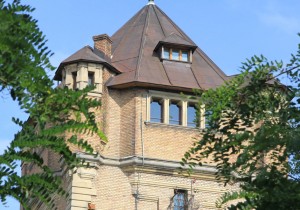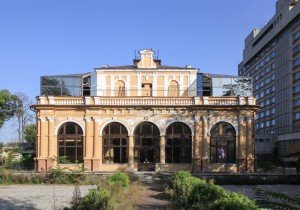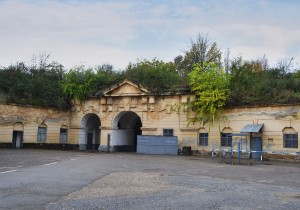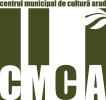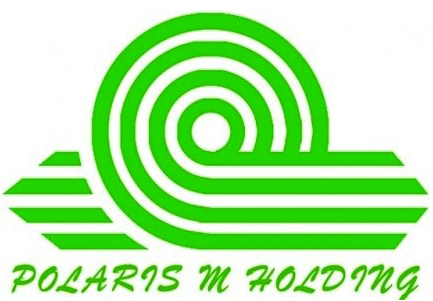Arad's Trajan Bridge crosses the river Mureş, connecting the traffic axes for both cars and trams, between the city centre and Aradul Nou district. It was built during the years of 1910-1913 and rehabilitated during 2010-2011.
History
The construction of Arad’s Trajan Bridge has been originally promoted as a proposal of the Administration of Arad, at the beginning of the 20th century. During 1908, a project-agreement was made with the Austrian Railway Company. The architectural plan of the bridge was designed by engineer Robert Toth from Reșița. The construction of the bridge took place in the period of 1910-1913.
Most of the bridge’s structural elements were made at the famous Bridge Factory in Reșița, between the years of 1910-1912. The weight analysis and the official handing over of the bridge to Arad happened on 11 November, 1910. Towards the end of World War II, the bridge was dynamited in 1945, but the structure was not so badly affected. The bridge was rebuilt within a few months after the war.
Architecture
The bridge was built after a plan devised by the engineer Robert Toth (1857-1913). The iron structure was produced in the Bridge Factory in Reșița, named: Kaiserliche und Königliche Privilegierte Österreichische Staatseisenbahngesellschafft-St.E.G.
The ornamentation of the bridge shows Seccesionist details. From a far-away perspective, the bridge seems to consist of three consecutive smaller bridges, thanks to the curved shapes of the classic “Gerber” system.
Therefore, the bridge has three openings: the central one, which measures 85,30 metres, and two marginal ones, each measuring 50,05 metres. The total length of the bridge covers the distance between the dikes along the river Mureș.The width of the carriageway, composed of two traffic lanes, one on each end, is of 8,05 metres. The width of the bridge is of 9.8 metres. On the outer edge of the main beams, there are suspended walkways with a moving width of 1,5 metres each.
Interesting facts
Although much smaller in its current form, the Trajan Bridge of Arad is very similar to the famous Liberty Bridge (former Franz Joseph Bridge), across the Danube in Budapest. In 1945, the Budapest bridge shared the same fate as Arad’s bridge, as it was dynamited by Nazi air raids, but the consequences were more significant.
Data which indicates a direct link between the architects of these two bridges couldn’t be found. It is obvious that both have undergone training in the Budapest School of Engineering, being influenced by the european design phenomenon generated by Gustave Eiffel and other German and Austrian engineers.
Robert Toth, the designer of Arad’s Trajan Bridge, after graduating from the Piarist high-school in Timișoara, continued his studies at the Technical University of Budapest and then took an internship at the Hungarian Railways (Magyar Államvasutak) at which point, it is very possible he could have met János Feketeházy, the designer of the Liberty Bridge in Budapest.
Similar tourist attractions
The Water Tower, in the past, was supplying water for the city and also was signalising fires. Today, it is declared a mini-museum of water, which hosts themed exhibitions.
The old Casino building was built in eclectic style around 1872 and shortly became a fashionable spot in Arad, preferred by those in seek of luxury and relaxation.
The ensemble of Arad Fortress includes three architectural landmarks: the Fortress of Arad, the defensive ditch and the Franciscan Church.

